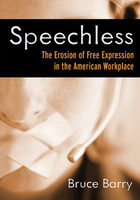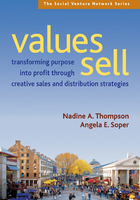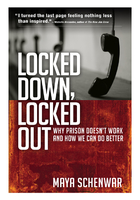AMERICAN REGIMES
Every regime is like a political house built around five great pillars.[1]
When you go to buy a house, you usually have to get it inspected. You want to make sure that you understand the structure and that the house is safe. The inspectors will tell you something about the history of the house and what you might have to repair or rebuild.
Since we all live in our current regime's house, we need to inspect it, too. We urgently need to understand its pillars and its history. But there is no official inspector to call and we have to do our own analysis. Since the house is shaded and partly hidden, this is a challenge. We need to do some serious investigative work to see the house clearly and know what kinds of repairs and rebuilding it might need.
Pillar I: A Dominant Institution (e.g., the corporation, the government, the church)
?The dominant institution is the foundation of the house.
Pillar 2: A Mode of Politics (e.g., corporate sovereignty, theocracy, representative democracy)
?The mode of politics determines how the house is run.
Pillar 3: A Social Contract (e.g., the welfare state, laissez-faire, libertarianism)
?The social contract sets the terms for the tenants.
Pillar 4: A Foreign Policy (e.g., isolationism, empire, multilateralism)
?The foreign policy dictates the relation to the neighbors.
Pillar 5: An Ideology (e.g., social Darwinism, socialism, individualism, democracy)
?The ideology spells out the creed of the household.
I am writing this chapter to offer some general observations about the architecture and history of political regimes in America. They are a first step in a citizen's guide to regime houses. As a warning, most such houses have mainly been owned and managed by a select few with their own agenda, so we have reasons to be very cautious. But in democratic regimes, ordinary dwellers can empower themselves to run the house. The architecture of the house and the design of its pillars reflect the underlying and changing balance of power in society and the spirit of the era that might be called the zeitgeist.
While you won't read about regimes and political houses in most history books, American history is a series of fascinating regimes and regime changes. The modern history of U.S. regimes began immediately after the Civil War, when the earliest American corporate regime was born. Simon and Garfunkel sang a catchy, popular American song, "What a Wonderful World," originally written and performed by Sam Cook, that began "Don't know much about history." Many readers may have little taste for history and feel an urge to fast forward to the next chapter that tells the story of today's regime. But if you want to understand the regime house you live in today, and how it endangers you, you have to know its history, one largely hidden from most Americans.
U. S. MODERN REGIMES
First Corporate Regime, 1865—1901—Gilded Age
?John D. Rockefeller and J. P. Morgan build this house.
Progressive Regime, 1901—1921—Progressive Era
?Teddy Roosevelt busts the trusts in this house.
Second Corporate Regime, 1921—1933—Roaring Twenties
?Harding and Hoover turn the house back to big business.
New Deal Regime, 1933—1980—New Deal
?Franklin D. Roosevelt designs a people's house.
Third Corporate Regime, 1980—?—Reagan Revolution
?Global corporations build this house for themselves.
In this chapter, I briefly tell the story of the four regimes before today's third corporate regime. All these regimes are historical twists and turns of an American capitalist system. Since they are all houses with the same broad capitalist architecture, you may ask, Why is it important to introduce the idea of regimes at all, and distinguish between corporate and non-corporate models?
The idea of regime helps capture the changing balance of power and different zeitgeists of different U.S. capitalist eras. The change from one regime to another is a political tidal wave—for better or for worse—in the lives of ordinary Americans and in the fate of American democracy and American morality. In corporate regimes, the balance of power swings toward money and away from democracy. The zeitgeist is overwhelmingly corporate, promoting profit over everything else. In other regimes, such as the New Deal during and after the Great Depression, the balance of power shifted away from corporations and empowered ordinary people to renew the American democratic dream. The passion for social justice and the strong anti-corporate sentiments of the New Deal regime were a revolutionary change from the selfishness and greed of the Roaring Twenties regime—showing how Americans can dramatically rebuild their political house.
American regimes change because capitalism creates many internal crises that weaken the architecture and threaten the tenants, and we have strong social movements that respond to these crises and can repair or transform our political house. The U.S. government is an institution spiced with contradictions and marked by "relative autonomy."[2] That's a fancy sociological term for saying that we have a capitalist U.S. government but one that is far from being a puppet of the ruling class.[3] While it is always strongly influenced by corporations, it can also be swayed by popular movements opposing corporate regimes and seeking to build a very different house.
In some periods, notably the Progressive Era and New Deal, the state moves in often bewildering, opposite directions at the same time, tugged variously by corporations, liberal and socialist reformers, workers' and farmers' grassroots movements, and progressive intellectuals and bureaucrats. A relatively autonomous capitalist state—open to influences both from big business and from people's movements—makes possible major regime changes within capitalism itself. The New Dealers had business supporters and reconstructed America partly to save corporate capitalism, but they were mainly movements of liberal elites, workers, the poor, and ordinary citizens like you and me, who managed to topple a corporate regime and build a new political house, a historic achievement that could happen again.
Regime changes in America are not revolutions, with the exception of the American Revolution itself. But they represent important shifts in the direction of the nation, creating major changes in power and spirit, and opening up possibilities for more fundamental change still on the American agenda. When we understand the story of earlier American regimes, we get a clearer view of our current hidden power system and how we might move beyond it.
THE FIRST CORPORATE REGIME
The Regime of the Gilded Age
DOMINANT INSTITUTION The Unregulated National Corporation
MODE OF POLITICS Naked Corpocracy
SOCIAL CONTRACT Sink or Swim
FOREIGN POLICY Manifest Destiny
IDEOLOGY Social Darwinism
Spanning the quarter century after the Civil War, the Gilded Age, known for its robber barons and great fortunes, gave birth to the first American corporate regime. It was quite a house! Swashbuckling railroad barons like Commodore Vanderbilt, William Henry Vanderbilt, Jay Gould, and E. H. Harriman helped build the new regime. In the 1860s, they exploited government credit and land grants, banking deals, speculative investments, arms dealing, and political connections to construct the new continental railroad that tied together the nation's first national market. In successive decades, John D. Rockefeller, J. P. Morgan, and the rest of the robber barons built the great national corporations that became the dominant institutions of America.[4] President Rutherford B. Hayes, himself a railroad lawyer, marveled at the power of the railroad companies, asking, "Do the railroads own the people or the people own the railroads?"[5]
The hidden power within this regime lay mainly in the web of relationships the corporations built among themselves and with the state. Railroad barons such as Vanderbilt and Gould constantly realigned themselves with each other and with financiers like Morgan to gain competitive advantage and corner the market. The trend was toward ever-larger alliances, culminating in the marriage of the Rockefeller and Morgan corporate empires. Rockefeller sat on thirty-seven corporate boards and Morgan on forty-eight. When they merged in the first few years of the twentieth century, the corporate system involved 341 interlocking directorships linking more than a hundred of America's top corporations. The first corporate regime was a very close family of very big corporations.[6]
The regime also housed from the beginning a tight marriage between the robber barons and the national government. Presidents Grant, Hayes, Garfìeld, Arthur, Harrison, and McKinley, all Republican, and Grover Cleveland, the only Democrat, all carried water for the new national captains of industry. Rockefeller's aides, with briefcases literally stuffed with greenbacks, worked in the offices of senators who wrote legislation on oil, banking, and other industries. Senator Joseph Foraker of Ohio got about $50,000 from Standard Oil during the six-month period he spent preparing the corporate policy planks of the Republican policy.[7]
The captains of industry used their influence over both the Democratic (take note, Democrats today) and Republican presidents to send in troops when workers tried to organize. At the famous 1894 Pullman strike, Democratic President Grover Cleveland sent in federal troops to attack the workers. When they pleaded for his support, he told them, "you might as well ask me to dissolve the federal government of the United States."[8] The regime pioneered the ruthless assault on unions that has become a staple of our own political house today.
I dub the regime's political system a corpocracy because it maintained the formality of popular sovereignty while serving effectively as a system of corporate rule. Corpocracy joins corporations and a formally democratic government in house ownership and management, with corporations enjoying the leading role and gaining their legitimacy through control of elected politicians. In different corporate regimes, the marriage between corporation and government varies in terms of its turbulence and equality of partners. In the first corporate regime, the corporations ran roughshod over their government partners, with the robber barons barely concealing their iron grip on the political wheels of government. Of all American regimes, this one was least concerned with hiding power behind a curtain. Listen to President Rutherford B. Hayes, a Republican, again, who saw it all clearly: "This is no longer a government of the people, by the people, and for the people. It is a government of corporations, for corporations and by corporations."[9]
Nonetheless, not all the power of the new corpocracy was visible. Gilded Age presidents appointed Supreme Court justices who redefined the corporation in a dramatic way. For the first time ever, in the 1886 Santa Clara decision involving a railroad case, the judges ruled that the corporation was defined as a "legal person" entitled to constitutional protection under the Fourteenth Amendment. This had several major transformative effects, largely unseen by the public, that boosted corpocracy at the expense of democracy. By building corporate power under the umbrella of constitutional rights, the first corporate regime weakened democratic popular control in the name of the very democratic rights that most Americans believe the Constitution is supposed to protect.[10] This equating of corporate rights with the rights of ordinary citizens has become one of the great hegemonic strategies of corpocracy in today's regime, as I discuss in the next chapter.
The robber barons dominated American society from the end of the Civil War until 1900. As Matthew Josephson, the great chronicler of the Gilded Age, put it, "Like earlier invading hosts arriving from the hills, the steppes or the sea," the robber barons "overran all the existing institutions which buttress society, taking control of the political government, of the School, the Press, the Church, and… the world of opinions or of the people."[11]
The social contract of the era was "sink or swim." At a time when John D. Rockefeller became the country's first billionaire, 90 percent of Americans were poor and in constant danger of drowning. There was no social safety net and the robber barons opposed the unions or social programs that might have brought some security to ordinary workers and farmers. In slums like Pittsburgh's Painter Mill, people cooked in dark cellar kitchens in houses without ventilation or drinking water. Eighty percent of the regime's workers, many working sixteen hours a day, were poor.[12] As an "anxious class," never sure whether they would have a job tomorrow, they accepted whatever the robber barons paid, something many workers today can well understand.
The regime had an expansionist foreign policy of Manifest Destiny that viewed the regime's conquest of an endless American frontier as opening endless opportunity for ordinary Americans. America was not yet focused on global pursuits, but the conquest of the South and West was essential to the new national corporations. It created their new vast markets and opportunity for profits.[13] The idea of land and resources for every American helped legitimate the system.
Social Darwinism was the reigning ideology. John D. Rockefeller said it clearly: "The growth of a large business is merely a survival of the fittest. … It is merely a working out of a law of nature and law of God." He concluded "God gave me my money."[14] The gross disparities between rich and poor were seen as part of the natural order of things. Darwinist ideology and religion were powerful hegemonic forces stabilizing a regime in which so many workers were brutally exploited.
The parallels between this first corporate regime and the one today are haunting. President Clinton made the comparison himself, saying that both the Gilded Age and our own era are corporate periods of great opportunity, with millions being left behind. Then as now, Clinton said, "vast fortunes are being made.… But a lot of people are being dislocated."[15] It has become fashionable to call this the second Gilded Age.[16]
The late-nineteenth-century robber-baron regime created many of the great historic companies, such as Chase National Bank (now J.P. Morgan Chase), First National Bank and National City Banks of New York (now Citigroup), Standard Oil (now called Exxon Mobil), and U.S. Steel, which, after various mergers, still dominate America. It was the first regime to flood politics with corporate money and create all-powerful corporate lobbies in Washington, constructing a corpocracy whose legacy would threaten democracy long after the robber barons passed from the scene.
This first corporate regime, despite its awesome power, faced a radical challenge by the Populists, fiery farmers and plain-spoken people from the heartland who created the People's Party in 1892 and launched one of the country's most important politics of regime change. They proclaimed in 1892 that corporations were being used "to enslave and impoverish the people. Corporate feudality has taken the place of chattel slavery."[17] The Populists were the most important of a cast of colorful social movements emerging in the 1870s, including the Knights of Labor, urban anarchists, Christian socialists, the Grange (known as the Patrons of Husbandry, discontented farmers who pushed for expansive credit), railroad unionism led by Eugene Debs and other socialist labor groups, and other regime-changing visionaries linked to the Populists whose activities I describe in Chapter 6Suffice it to say here that the United States has rarely witnessed an outcropping of such diverse and radical democratic movements that brought hidden power into the spotlight and fought for the abolition of the first corporate regime. They were motivated by many forces: an extended depression in the 1870s and one of the country's worst financial crises in 1893, growing farm debt and credit crises linked to high interest rates imposed by Wall Street, skyrocketing shipping, storage, and transportation costs for farmers imposed by railroads and other corporate middlemen, and the sense of loss of control to new giant corporate entities who had never before ruled the country. They sought to break up trusts and monopolies, create government control over the banking system, and build a new alternative economy of farmer and worker cooperatives.[18]
THE PROGRESSIVE REGIME
The House the Progressives Built
DOMINANT INSTITUTION The Regulated Corporation
MODE OF POLITICS Liberal Corpocracy
SOCIAL CONTRACT Social Reformism
FOREIGN POLICY Early Empire
IDEOLOGY Progressivism
Many of the anticorporate grassroots groups faded, including the Populists, who melted away with their 1896 presidential endorsement of the defeated Democratic nominee, William Jennings Bryan. But they helped give rise to the reform movement of the Progressive Era under the "trust-buster," President Theodore Roosevelt. Since many readers may think of themselves as progressives, it is particularly important to understand the deep contradictions and complex blend of liberalism and conservatism that defined the progressive regime.
In 1907, Roosevelt called for "the effective and thoroughgoing supervision by the National Government of all the operations of the big interstate business concerns," a direct challenge to the "free market" regime discourse of the robber barons. Roosevelt was no revolutionary but he did engineer his own regime-change politics.
Roosevelt sought to create a Bureau of Corporations that would put limits on the biggest Rockefeller, Morgan, and other robber-baron fìefdoms. Corporations had to restructure themselves and embrace a measure of public accountability, as the Progressive Era consolidated political power in a new regulatory regime. As historian Martin J. Sklar put it, Roosevelt sought to subordinate corporate power to the state to a dramatic degree: "The state would not simply police or regulate the economy… corporations would become," in Roosevelt's vision, "agents, ‘controlled and governed,’ of the state and public policy"[19]
TEDDY ROOSEVELT'S PROGRESSIVE CREED
"The true friend of property, the true conservative, is he who insists that property shall be the servant and not the master of the commonwealth; who insists that the creature of man's making shall be the servant and not the master of the man who made it. The citizens of the United States must effectively control the mighty commercial forces which they have themselves called into being."
Theodore Roosevelt, speech at
Ossowatomie, Kansas, August 31, 1910
Roosevelt did not create the radical dismantling of corporate rule that the Populists envisioned, and indeed his new regime restructured government not just to protect workers but to provide more stability and regulatory support for the corporations themselves. Gabriel Kolko, a historian of the Progressive Era, calls his classic book on the era The Triumph of Conservatism.[20] He shows that the new regulatory state created by the Progressives actually delivered precisely what the growing national corporations needed to survive and prosper. The Progressive state would regulate and weed out cheap competition, stabilize the business cycle, and provide the social reform the corporations needed to defuse populist discontent. No less a financier than Henry Davison, J. P. Morgan's partner, told Congress in 1912: "I would rather have regulation and control [of the banking sector] than free competition."[21] Could there have been a more ringing corporate endorsement of the Progressive agenda?
The benefits corporations secured during the Progressive regime show how subtly and forcefully capitalist hidden power exerts itself in all historical eras. As Progressives, driven by liberal and reformist sentiments, sought to build a regulated capitalism, they both strengthened and constrained the corporate order. The state gained its own regulatory powers, a rewiring of the first corporate regime that reined in corporate excesses and offered meaningful protections for ordinary Americans. But regulation also helped legitimate corporations by appearing to subject them to democratic control. The regulatory system built by Progressives has become one of the corporate system's most powerful hegemonic tools for securing the hearts and minds of ordinary workers and citizens.[22]
The Progressives, nonetheless, created a radically different zeitgeist from the Gilded Age period. It challenged many reigning corporate values and was bitterly opposed by large sectors of business. The regime replaced the old "sink or swim" social contract with a new system of progressive reforms regulating abuse of workers, especially children and the poor. Progressive muckrakers like Upton Sinclair and Lincoln Steffens, in their vivid exposés of the meat factories and urban slums, helped build a deep anti-corporate sensibility that spread widely in the population. If corporate values of greed and laissez-faire defined the Gilded Age regime, the spirit of public interest, liberal reform and outrage at corporate abuse defined the zeitgeist of the Progressive regime.[23]
The New Deal would later mount a far deeper assault on corporate power. Nonetheless, the Progressive regime arose partly out of the Populist legacy of deep discontent with corporate power. Its profound contradictions remind us that all U.S. regimes serve corporations, but some do so in a way that opens up new popular horizons for challenging the corporate order.
The Progressive regime faded in the waning years of World War I, drastically weakened by the unpopularity of the war and President Woodrow Wilson's repressive measures to stifle antiwar dissent. In different ways, Theodore Roosevelt and Woodrow Wilson both advanced the regime's foreign policy of early empire. The United States was already a significant expansionist power, and by World War I was a significant world power. Roosevelt was an unreconstructed imperialist, as displayed both in the Spanish-American War and the colonization of the Philippines. Wilson was more like today's neoconservatives, cloaking expansionism in highly idealistic rhetoric about making the world safe for democracy.
Early empire served corporations seeking new foreign markets, but its excesses catalyzed the regime's collapse. In 1917, Wilson signed the Espionage Act and used it to silence peace activists, antiwar labor groups like the Industrial Workers of the World, and prominent anti-war socialists like Eugene Debs, who spoke for millions of Americans unenthused or opposed to the war. The regime moved harshly against dissidents. Vigilante groups, including the American Protective League sponsored by Wilson's Department of Justice, identified more than three million "disloyal" Americans, several thousands of whom were prosecuted under the Espionage Act. This was followed by the great "Red Scare" of 1919 and 1920, triggered by a bomb at the home of Wilson's Attorney General A. Mitchell Palmer. The infamous Palmer raids, backed by a Congressional Act permitting deportation of aliens, led to roundups of more than four thousand people in January 1930, who were held in seclusion for long periods, denied representation, and then deported. The general climate of repression created a right-wing drift that severely weakened the liberal, reformist zeitgeist of the Progressive regime.[24]
Ironically, regime change occurred partly through the political skill of isolationist Republicans, who exploited the mass disenchantment with a bloody war that had never been popular. When Wilson first announced the need for a million Americans to enlist, only 73,000 did so. By the end of the conflict, war-weary Americans, disaffected by the idealist adventurism of the Progressive regime leaders, became receptive to Republican calls for rebuilding the good life at home. Behind the scenes, in the regime that followed, the Republicans helped rebuild European colonial empires that would secure foreign markets for their big-business sponsors. In this sense, the new regime would not be isolationist, as it is typically regarded, but a surrogate empire, helping reinforce the battered European empires after the war. To ordinary Americans, the Republicans argued for a postwar regime change that would create a new consumer and corporate paradise at home.[25]
THE SECOND CORPORATE REGIME
The Regime of the Roaring Twenties
DOMINANT INSTITUTION The Monopoly Corporation
MODE OF POLITICS Deregulated Corpocracy
SOCIAL CONTRACT Corporate Paternalism
FOREIGN POLICY Surrogate Empire
IDEOLOGY Consumerism
The second corporate regime of the Roaring Twenties was a twentieth-century replay of the Gilded Age and another harbinger of today's corporate regime. The Harding, Coolidge, and Hoover administrations abandoned the regulatory impulse of the Progressive regime and turned Washington back to big business. While less constitutionally extreme than the Gilded Age presidents, they created a new regime of corporate hyper-power, dominated by an ideology of consumerism, corporate self-regulation, and paternalism.
Corporate self-government was the central political theme of the second corporate regime. When President Hoover, in the depths of the Depression, argued that the government budget should be slashed, he was expressing the regime's fierce counter-reaction to Theodore Roosevelt, rejecting forever the Progressive zeitgeist of government activism and reform.[26] Government was seen as the enemy and corporations were viewed as the invisible hand that could solve social problems. President Hoover said that the government "owes nothing" to himself or any citizen, since the business world had created opportunity for everyone and could police itself.[27]
While the second corporate regime pronounced itself a laissez-faire order, it was actually a deregulated corpocracy. As in the Gilded Age, corporations had their snouts deep in the government trough and depended on government for subsidies, contracts, and opening of public lands and leases for exploiting public resources. The huge corporate scandals like Teapot Dome exposed the massive corruption and political links between big business and big government.
The new regime proclaimed a union-free world known as "Plan America," a social contract of corporate paternalism in which big business would house and educate workers and provide them with medical care and retirement. Plan America envisioned a whole society wrapped in a benign corporate cocoon, without any need for government regulation or unions, previewing some of the fashionable views about corporate responsibility in the current regime. The antiunion sentiment was fierce, with the courts in the 1920s issuing 2,130 injunctions against strikes compared to 835 between 1910 and 1920.[28] The Roaring Twenties regime created a corporate zeitgeist of postwar individualism, hedonism, and mass consumerism.
Consumerism—and the associated ethos of individualism—was the critical ideological contribution of the corporate second regime. As the historian of consumerism Stewart Ewen has shown graphically, modern advertising got its birth in this era, as did the industry of public relations that would reshape both the mass media and all government and corporate propaganda.[29] The regime's construction of consumerism was tied to corporate profitability: when Henry Ford argued for the $5 a day wage, it was to make sure that his workers could afford to buy the cars his company would produce. More broadly, though, consumerism fueled the regime's zeitgeist of hedonistic individualism that helped to legitimate twentieth-century capitalism. You might have to work hard, but you could be assured of your reward in this life, not the next one.[30]
Consumerism also helped undermine democracy, persuading people that their real voice could be heard with their buying power rather than acts of citizenship. Tying the sense of efficacy to consuming rather than voting or protesting was another great legitimating power for modern corporate capitalism. But the excessive hyper-hedonism and individualism of the Roaring Twenties helped to undermine it. The regime's zeitgeist of unregulated greed contributed to the huge stock market bubble that popped in 1929. The regime ended with market collapse and the victory of President Franklin Delano Roosevelt in 1932.[31]
THE NEW DEAL REGIME
The House the Workers Built
DOMINANT INSTITUTION The Federal Government
MODE OF POLITICS American Social Democracy
SOCIAL CONTRACT The Welfare State
FOREIGN POLICY The American Century
IDEOLOGY Social Justice
Spurred by the Depression and the recognition that capitalism could only be saved under a different order, Roosevelt created the New Deal, a new regime that established basic rights for labor codified in the Wagner Act, and created an entirely new social welfare system built around Social Security. As I show in Chapter 3, the New Deal was a continuing work in progress, the fruit of a dynamic interaction between regime-change movements of workers, veterans, farmers, and the poor, on the one hand, and progressive policy elites in Washington. The New Deal did not end corporate power but it turned the government into a limited agent of countervailing power and it sought to preserve a public sphere, whether in the health system or the public schools, safe from corporate predators. Economist John Kenneth Galbraith wrote at the height of the New Deal, "the major peacetime function of the federal government" is to rein in corporate power, a statement that no established thinker or politician could have entertained in the Gilded Age or Roaring Twenties regimes.[32]
The New Deal regime was the longest and most important in modern American history. FDR, an aristocrat, did not enter his presidency as an anticorporate reformer, but he created the American regime that most deeply challenged corporate power and the corporate zeitgeist. Much of big business came to hate him as a "class traitor," but FDR relished the confrontation. He was exuberant when he introduced the controversial 1937 Wealth Tax Act, which spurred corporate elites to sputter and rage about his treachery.[33]
The New Deal, of course, did not undermine corporate capitalism. Instead, it preserved corporate capitalism just as the Progressives had helped create it. Corporations remained a powerful force in America and the New Deal did not live up to the hopes of the left or even many of FDR's more liberal progressive advisors, such as Rexford Tugwell and Henry Wallace. Nonetheless, FDR radically shifted the balance of power and was the president who most fully legitimated a countervailing "big government" in a society of big business.
FDR did not start as a regime changer. In 1932 and 1933, he pursued a version of Hooverism and the earlier regime's corporate self-policing, establishing the National Recovery Administration (NRA), which required industries themselves to create their own new codes of conduct. But the failure of corporate self-regulation and the militant upsurge of popular activism pushed FDR and the regime in a new direction. The New Deal regime upended the Roaring Twenties vision of corporate self-government, replacing it with an activist federal government as the dominant institution.[34]
Franklin Roosevelt created a regime based on a new tie between organized labor and activist government. The new regime proved that while the bond between corporations and the state would not dissolve, the "relative autonomy" of the state allowed it to ally with popular forces to challenge corporate power. Roosevelt had always been deeply ambivalent about unions, but the power of labor activism and the deep labor sympathies of some of his closest advisors, such as Frances Perkins, Senator Robert Wagner, and Rexford Tugwell, led him to endorse the 1935 Wagner Act. Along with the Social Security Act, it was the foundation of regime change, pulling the state from its primary alliance with big business to a new intimate relation with labor.[35]
The new state-labor alliance was rife with strains and contradictions; the militant labor leader John L. Lewis was a Republican, and FDR had many close big-business associates. But the new tie to labor fused with the progressive sympathies of FDR's policy advisors to help create an American social democracy. Social democracy is the label typically used to characterize Western European systems characterized by activist government, strong labor movements, and universal social welfare policies. The new regime's version of social democracy was far less ambitious, reflecting the relative weakness of the new labor movement and the continuing great power of big business. But its zeitgeist was social activism, social justice, and relief for the long-suffering poor.
The New Deal regime lasted several decades after Roosevelt's death in 1945. In the 1950s and 1960s, labor membership peaked and did not start reversing until the 1970s. The social justice focus of Lyndon Johnson's Great Society, including the Civil Rights legislation of the early 1960s, was an extension of the original New Deal's social democratic promise. Even Republicans such as Richard Nixon were still bound by the terms of discourse of the New Deal, as when he supported a minimum income for all Americans and new environmental and social legislation.
In its post-Roosevelt phases, though, the contradictory character of the regime—its fundamentally conservative as well as liberal impetus—began to emerge. The Taft-Hartley Labor Act, a harshly antiunion measure passed in 1947, signaled the resurgence of corporate forces within the regime. Certain corporate sectors, including retail and finance, had helped build the New Deal early on. Retailers like Edward Filene, a major FDR supporter, believed that the New Deal was necessary to revive consumer spending for their department stores. Financiers, including Joseph Kennedy, had a broad overview of what was necessary to keep capitalism alive, and supported New Deal planning and social programs as a way to stimulate the economy and placate social discontent that could lead to socialism.[36]
In 1944, the choice of the centrist Harry Truman over left-leaning Henry Wallace for vice president would strengthen the corporate turn of the regime after FDR's death. Truman replaced Harry Dexter White, Roosevelt's left-leaning advisor on international economic affairs, with conservative advisors who transformed the regime's original plans for international economic cooperation and the United Nations into an agenda for an American Century.[37]
Truman's foreign policy, rooted in the new Cold War, supported a vision of a new global American era. It promised the global markets and resources that U.S. corporations were finally in a position to exploit after the collapse of the European empires. It also generated the "military Keynesianism"—or high Pentagon spending—that became the New Deal's main strategy for stimulating technological innovation, pump-priming the economy, and creating prosperity.[38] Military spending succeeded where the earlier New Deal failed, finally pulling the country out of the Depression by spending vastly more public funds in World War II than had been spent through the entire New Deal period before the war.[39] The seeds of both corporate globalization and global American Empire were thus firmly planted in the latter phases of the New Deal regime, though they would not fully germinate until the rise of our current third corporate regime. This demonstrates the continuities, particularly in foreign policy areas, that knit different regimes together. It also puts on full display the contradictions within regimes themselves, and the evolutionary stages they move through as they age.
The corporate and military sides of the New Deal regime ultimately helped to sink it. By the late 1970s, the United States suffered "stagflation"—a combination of high unemployment and high interest rates—that felt like a mini-Depression to many American workers. Corporate globalization, which the New Deal encouraged, was a critical factor in the deteriorating economic conditions. Corporations were using globalization to escape from the obligations to workers and communities—including good wages, benefits, and environmental regulation—that the New Deal itself had built. As jobs were being lost to stagflation, corporate flight, and global competition, and as wages and benefits declined, the American household survived only by sending women to work, and making two incomes do the business of one. The sharp decline in American working and living standards undercut the core agenda of the New Deal regime.
Military Keynesianism played a significant role in the New Deal economic slide. Military spending had helped pull the United States out of the Depression. But continued high Pentagon spending in the Vietnam era and beyond drained capital from the civilian side of the budget. It exacerbated the crisis faced by U.S. companies as they tried to cope with new competitive pressure from European and Japanese economies not saddled by high military costs. The New Deal's institutionalization of what economist Seymour Melman called the "permanent war economy" proved contradictory and ultimately lethal, initially boosting the New Deal economy and finally helping bring the entire regime down.[40]
Nonetheless, the New Deal, despite its serious limitations, still gives hope to many ordinary Americans. By realigning government with ordinary workers and citizens, it created foundations for economic growth and the creation of a middle class who could make good on the American Dream. While the New Deal was not a revolutionary anti-capitalist regime and far from an ideal democratic order, it resurrected the democratic dreams of the Declaration of Independence, reversed the corrupting legacy of two earlier corporate regimes, and demonstrated to skeptics that U. S. regime change can take back the government from the corporate moguls.
注释:
[1]This box is reprinted from Charles Derber, Regime Change Begins at Home (San Francisco: Berrett-Koehler, 2004). As mentioned in the Acknowledgments, this book is a sequel to my earlier book, and I have drawn key concepts and passages from the earlier book to orient new readers. The boxes and several sections in Chapter 2, [3], and [10] of this book are reprinted from Regime Change, which offers the first presentation of the regime idea.
[2]The concept of relative autonomy has been widely discussed in the social science literature in an effort to understand who controls the state and how much freedom it has to pursue its own, autonomous agenda. For a good review of theories of the state and state autonomy, see Peter Evans, Dietreich Rueschemeyer, and Theda Skocpol, eds., Bringing the State Back In (Cambridge, Eng.: Cambridge University Press, 1985).
[3]The state's relative autonomy from the monied classes can work to provide a sense of genuine democracy that legitimates the corporate order even further. This concept of relative autonomy giving rise to hegemony is consistent with Antonio Gramsci's theory of how capitalist societies legitimate themselves. See Gramsci, The Prison Notebooks (cited in Introduction).
[4]The best discussion of the robber barons, including the railroad tycoons, and the social order they built is by Matthew Josephson, The Robber Barons (New York: Harvest Books, 1962).
[5]President Rutherford B. Hayes, cited in Harvey Wasserman, Harvey Wasserman's History of the United States (New York: Harper and Row, 1972).
[6]Wasserman, ibid. See also Derber, Corporation Nation (cited in Introduction), 19.
[7]Josephson, The Robber Barons, 359.
[8]President Grover Cleveland, cited in Howard Zinn, A People's History of the United States (New York: Harper and Row, 1980), 367.
[9]Ibid. See also Derber, Corporation Nation, Chapter 1.
[10]See Derber, Corporation Nation, Chapters 6–[7].
[11]Josephson, The Robber Barons.
[12]Richard Hofstadter, The Progressive Movement (Englewood Cliffs, N.J.: Prentice Hall, 1963).
[13]Historians Charles and Mary Beard and William Appleman Williams offered this interpretation of Manifest Destiny. See Charles A. Beard and Mary R. Beard, The Rise of American Civilization (New York: Macmillan, 1920), vol. 2. See also William Appleman Williams, The Tragedy of American Diplomacy (New York: Norton 1988). For a synthesis of their works and corporate interpretation of Manifest Destiny promoting market expansion in America itself and outside the country, see Andrew Bacevich, American Empire (Cambridge, Mass.: Harvard University Press, 2002), Chapter 1.
[14]John D. Rockefeller, cited in Derber, Corporation Nation, 27.
[15]Bill Clinton, cited in James Fallows, "A Talk With Bill Clinton," Atlantic Monthly, October 1996, 20–26, quotation on 22.
[16]One of the most prominent analysts developing this case is Kevin Phillips. See Phillips, The Politics of Rich and Poor (New York: Harper Collins, 1991). See also Phillips, Wealth and Democracy: A Political History of the American Rich (New York: Broadway, 2003). See also Derber, Corporation Nation, Chapter 1.
[17]Cited in Wasserman, History of the United States, 74, 77.
[18]The literature on the Populists and related Gilded Age movements is extensive (see Chapter 6). The best book on the radical anti-corporate and democratic spirit of the Populists is Lawrence Goodwyn, The Populist Moment (New York: Oxford University Press, 1978). For a far more critical and still controversial perspective that describes anti-Semitism, racism, anti-intellectualism, and xenophobia as populist failures, see Richard Hofstadter, The Age of Reform (New York: Vintage, 1960).
[19]Martin J. Sklar, The Corporate Reconstruction of American Capitalism: 1890–1916 (Cambridge, Eng.: Cambridge University Press, 1995), 203ff.
[20]Gabriel Kolko, The Triumph of Conservatism (New York: Free Press, 1963).
[21]Henry Davison, cited in Gabriel Kolko, Main Currents in Modern American History (New York: Pantheon, 1984), 13.
[22]See Derber, Corporation Nation, Chapter 8.
[23]The work of Sinclair and Steffens best symbolizes the muckraking zeitgeist of the Progressive era. See Upton Sinclair, The Jungle, new ed. (1905; repr., New York: Sharp Press, 2003); and Lincoln Steffens, The Shame of the Cities (1904; repr., New York: Dover Books, 2004).
[24]See Robert Justin Goldstein, Political Repression in Modern America (Champaign-Urbana: University of Illinois Press, 2001), for one account of this era. See also Howard Zinn, People's History of the United States, Chapter 14, for a detailed account of the 1917 Espionage Act and its use as a brutal tool to silence antiwar dissent.
[25]I am grateful to Yale Magrass for his insights in linking Progressive antiwar repression and imperialism with the isolationist Republican success after the war in creating a new corporate regime at home.
[26]See the discussion of Hooverism and corporate self-government in William E. Leuchtenburg, Franklin D. Roosevelt and the New Deal (New York: Harper Torchbooks, 1963), Chapter 1.
[27]Ibid.
[28]See Ted Nace, Gangs of America (San Francisco: Berrett-Koehler, 2003), 125. I am grateful to Nace for his personal communications regarding progressive regime repression and the need for a nuanced presentation of the Progressive regime and its complex relation to corporate power.
[29]Stewart Ewen, Captains of Consciousness: Advertising and the Social Roots of the Consumer Culture (New York: Basic Books, 2001).
[30]This notion of consumerism as a means of mitigating worker alienation with consumerism's rewards is highlighted in Ewen, ibid.
[31]I have learned about Plan America from Elly Leary, a United Auto Workers official and labor historian, in personal conversations and from unpublished drafts of her work on the history of the labor movement.
[32]John Kenneth Galbraith, American Capitalism: The Concept of Countervailing Power (Boston: Houghton Mifflin, 1951).
[33]Leuchtenburg, Franklin D. Roosevelt and the New Deal, 154ff.
[34]See Milton Derber, The American Idea of Industrial Democracy, 1865–1965 (Champaign-Urbana: University of Illinois Press, 1970), 302ff.
[35]Ibid.
[36]For a discussion of the role of different corporate sectors in the New Deal, and an extended treatment of retail and finance, see Yale Magrass, Thus Spake the Moguls (Cambridge, Mass.: Schenckman Publishers, 1982).
[37]See the discussion in Derber, People Before Profit (cited in Introduction).
[38]I am grateful to Yale Magrass for suggesting the importance in the New Deal of the evolution from "social Keynesianism," pump-priming by domestic spending, to "military Keynesianism," reliance on Pentagon spending in World War II and afterward.
[39]See Robert Lekachman, The Age of Keynes (New York: Random House, 1966), for a discussion of the details of the shifting financial priorities of the New Deal during and after World War II. He shows an overwhelming shift from social to military spending in the two phases of the New Deal era, with spending on the military boosting overall government spending to as much as five times in the five years after the war compared to the first five years of the regime.
[40]See Seymour Melman, The Permanent War Economy (New York: Simon and Schuster, 1983).














